Dogs have been aiding humans since the beginning of time. When humans first domesticated dogs, these pups were used for hunting and retrieving game, and to this date, these incredible, agile, and vigilant partners are helping us in more ways than we can count. These pups flush out and point game for the hunters, making it easier to take wild predators down. Many dogs even assist the hunting company in bringing the prey down and are known to be strong and fearless companions.
Now, Coyotes are a danger to livestock and cattle, and farmers and ranchers claim that the most destructive force that causes them immense financial damage is these sleek and clever coyotes. These wild creatures weasel their way into farmland and cause havoc on the crops, the profit margins, and the livestock available on the family-owned farms and large-scale productions.
The problem is mostly encountered in the north of America, mostly comprising California and Mexico. This dominant predator constantly moves into unfamiliar territories to destroy and consume valuable crops to fulfill their omnivorous needs. They also spread a plethora of diseases to the livestock and domesticated farm animals because of their scavenger tendencies. Moreover, they attack readily accessible livestock in easily traversable confined areas.
Coyote Hunting Dog Breeds
Their harmful patterns cause little damage to large-scale productions with proper precautions in place, but they damage small-scale family-owned farms immensely, greatly influencing on loss of revenue. Hence, these vile creatures cause despair to the common man by intruding on farmland.
The state of Wyoming has designated coyotes as predatory animals and allows hunters to hunt coyotes even without a license. You do not need a permit to hunt these scavengers of food, and killers of small pets and cattle in Wyoming.
1. German Wirehaired Pointer
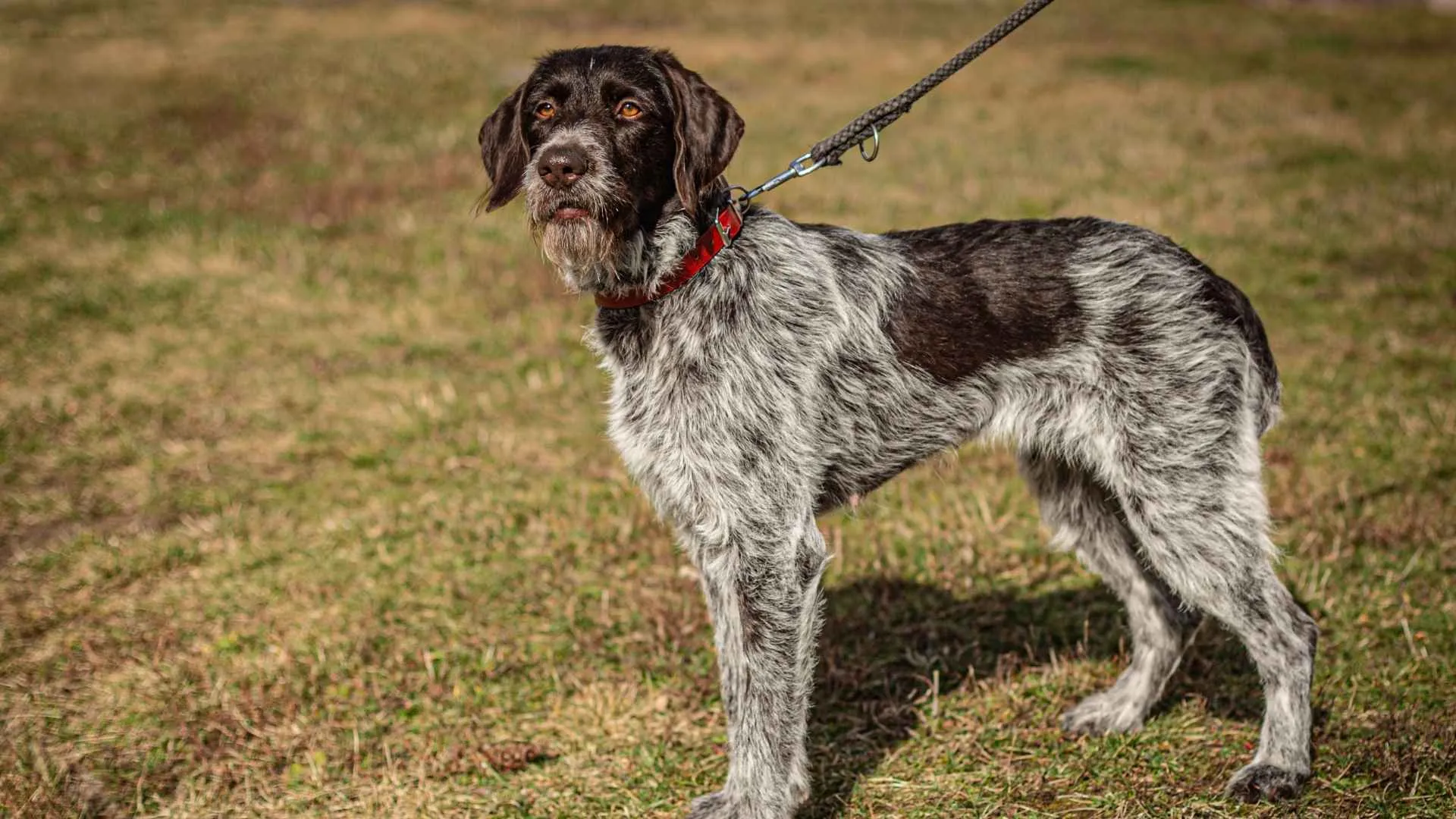
The German Wirehaired Pointer is a medium to large-sized dog that was developed in the 19th century in Germany as a versatile hunting partner in the mountainous regions of the Alps, dense forests, and even open areas like farms and ranches. The German Wirehaired Pointer is developed by crossing the wirehaired pointing griffon, German Shorthaired Pointer, German Roughhaired Pointer, or Stichelhaar, and the Pudel Pointer.
According to VCA Animal Hospitals, the short, wiry coat of this pup protects it from rough terrains, dense cover, and cold waters. These agile pups can search, locate, and point at game, and work closely with hunters. They are highly trainable gun dogs.
They can easily track and locate wounded game. More importantly, they are fearless when hunting clever animals like grey foxes and wild coyotes. They are quite devoted as companions and ideal pets for the family. The German wirehaired pointer is also a vigilant watchdog for its owners and property.
This energetic, intelligent, and determined hunter has won many master hunter titles and all-breed field championships. These pooches are sturdily built, weather-resistant dogs that can easily drive off coyotes from your properties and be excellent decoy dogs. These hyperactive dogs can protect your livestock easily and can also be trained to behave as moving decoys. So that coyotes stop visiting your vicinity.
2. English Springer Spaniel

These beautiful English bird dogs or gun dogs are small in size but are well capable of becoming good hunting partners. They are known for springing prey out of hiding and can help in hunting not only coyotes but also many small land game. These beauties have descended from the Norfolk and the Shropshire Spaniels in the mid-19th Century in England.
WebMD says the English springer spaniel is also closely related to the American cocker spaniel and the Welsh springer spaniel. Shockingly, less than a century ago, the springers and cockers used to come from the same litters where smaller pups or cockers were used for woodcock hunting, and the larger pups were used for springing and flushing out prey like game birds. These puppies are also used as sniffer dogs, search and rescue dogs, and in drug detection squads.
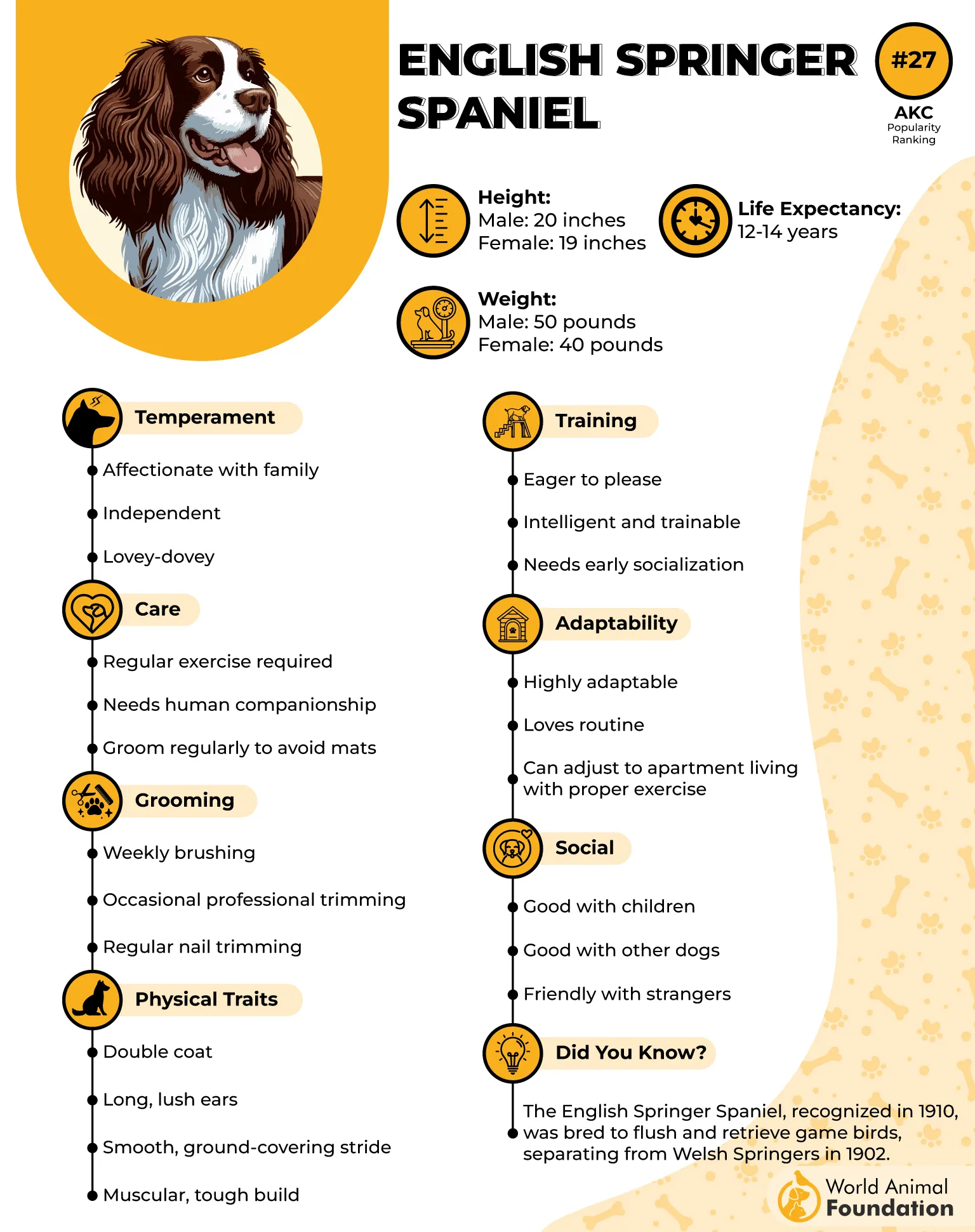
These noble breeds have also won accolades and medals for their services in detecting explosives and arsenal. The English springer spaniel is known for its incredible capability to cover rough terrain. They just need to be properly trained, with basic obedience training with positive reinforcement methods consistently, to harness their full hunting capabilities and potential.
They make excellent family dogs and are exceptional at hunting and chasing pheasants. The retrieving skills of this small pup give tough competition even to big dogs like Labrador and golden retrievers. These pups are small, hence they fit in smaller spaces easily, making them more efficient partners in hunting parties that are taking down the pestering coyotes.
3. Boykin Spaniel

This friendly and social dog is a daunting, clever, and calculated hunter that is eager to please, hence pretty easy to train. The boykin spaniel originated in South Carolina, USA, and is a versatile hunter that is known for flushing out birds that are hiding in flight. These pups are quite energetic and also have incredible endurance.
Only a bit larger than another type of spaniel called the American cocker spaniel, but it is a dutiful partner that makes hunting so much easier for its owner. Hence, if you are keen to explore the hunting arena and want to try your luck in the shooting range, then a boykin spaniel is a delightful companion to own.
The boykin spaniels have an unbelievable amount of stamina; they can withstand heat, and their eagerness to excel makes them ideal for dove, pheasant, and upland game hunting.
PetMD explains these pups also have the capability of driving out deer and tracking wounded game, and will be an excellent hunting partner if you wanna take down some coyotes. These dogs are compact, hence pretty easy to carry and take wherever you have planned your hunting expedition.
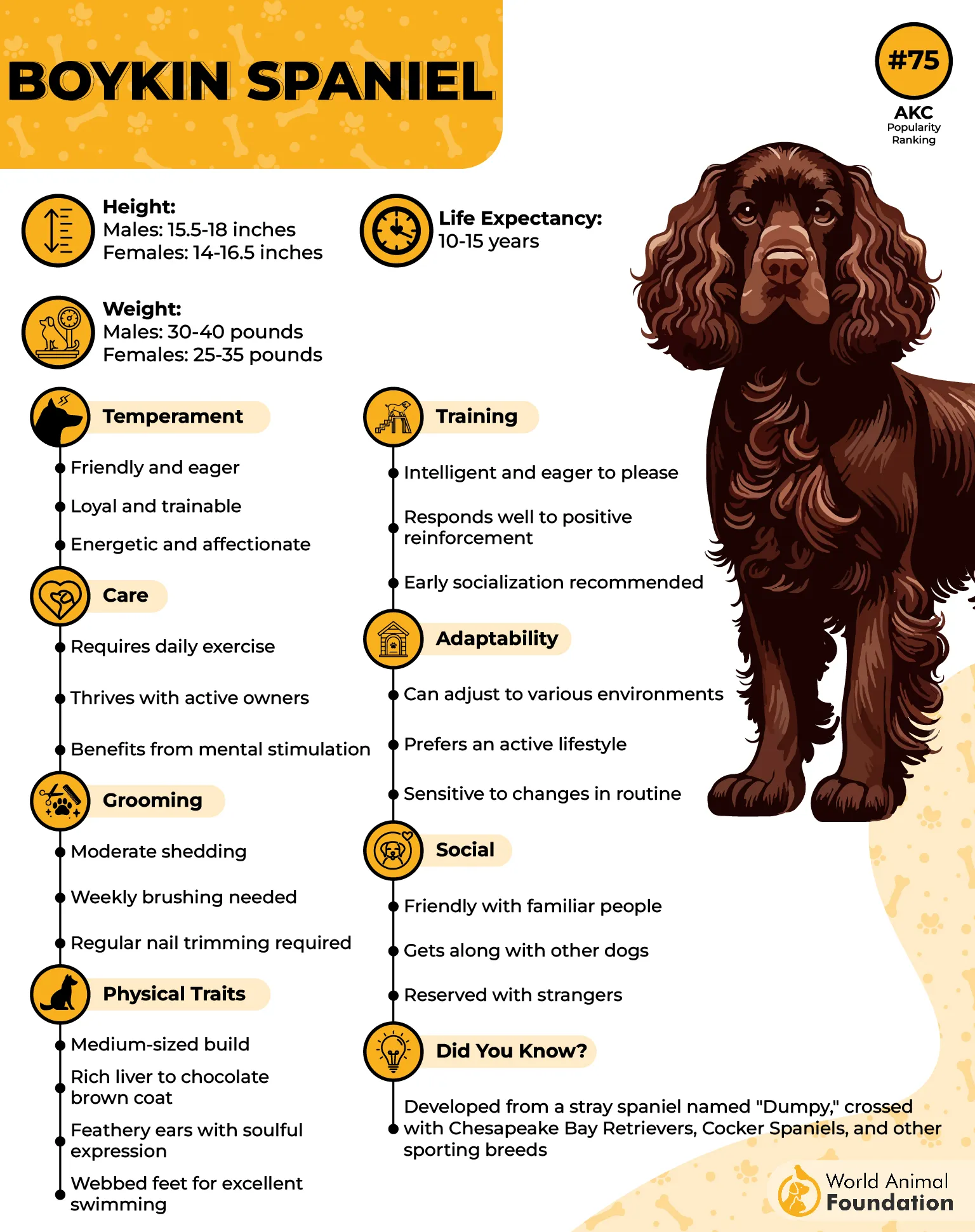
These dogs were originally bred to hunt turkeys and ducks in the Wateree River Swamp; hence, these doggies are also great swimmers because they have webbed feet.
If you are an outdoorsy kind a person, this pup is the perfect fit for you. Because these pooches stay the happiest when they have access to water and the outdoors. They make exceptional adventure buddies who will happily join you on lakeside adventures, camping trips, and any kind of outdoor activity like hiking, trekking, or swimming.
However, these dogs do need constant physical activities and mental stimulation to keep them in a joyful bubble. Hence, make sure they use their extra energy in exercise or training every day.
4. Karelian Bear Dog
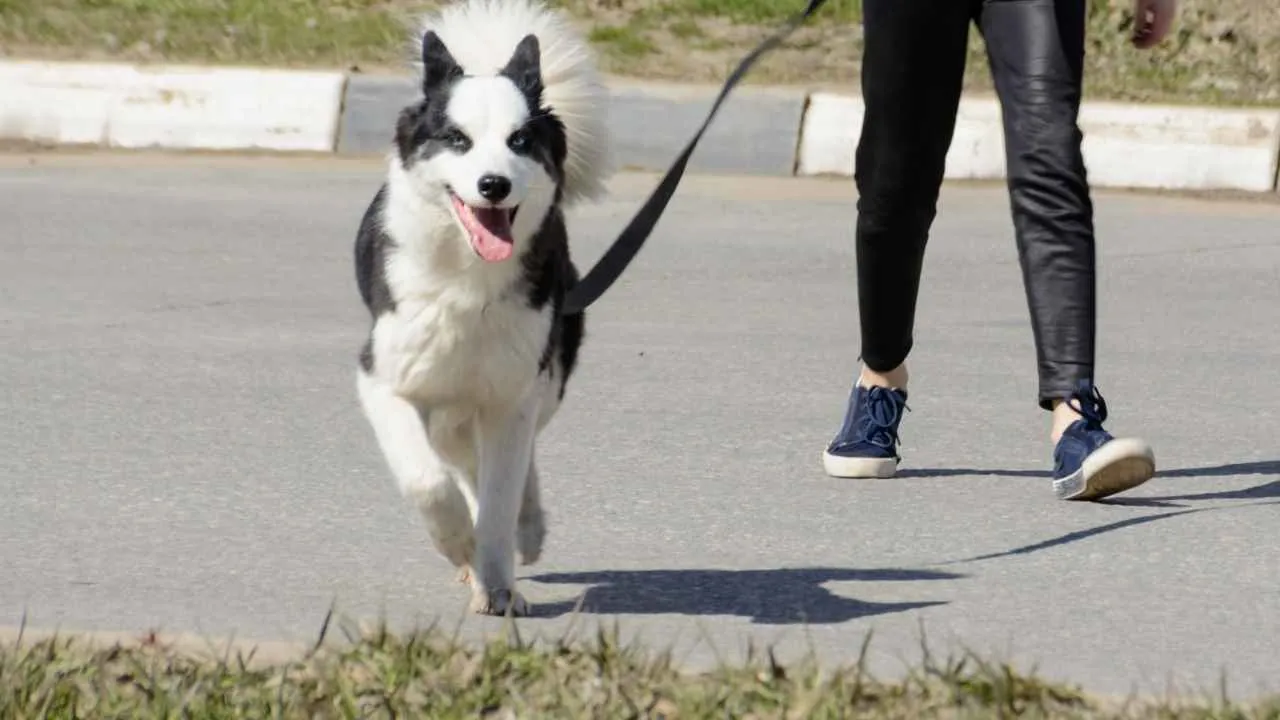
This daunting, robust, and muscular dog originated in northern Europe, specifically in the Karelia Region located between Finland and Russia. These medium-to-large dogs were originally bred to hunt large prey and predators like bears, elk, and wild boars. Their courage, agility, and endurance make them apt to hunt coyotes.
These working dogs are exceptional hunters and have a watchful and alert nature. These pups can survive and thrive even in harsh conditions and colder climates because of their dense and protective double coat. This spitz dog is a silent and stealthy hunter who only barks and alerts hunters when they have spotted the prey.
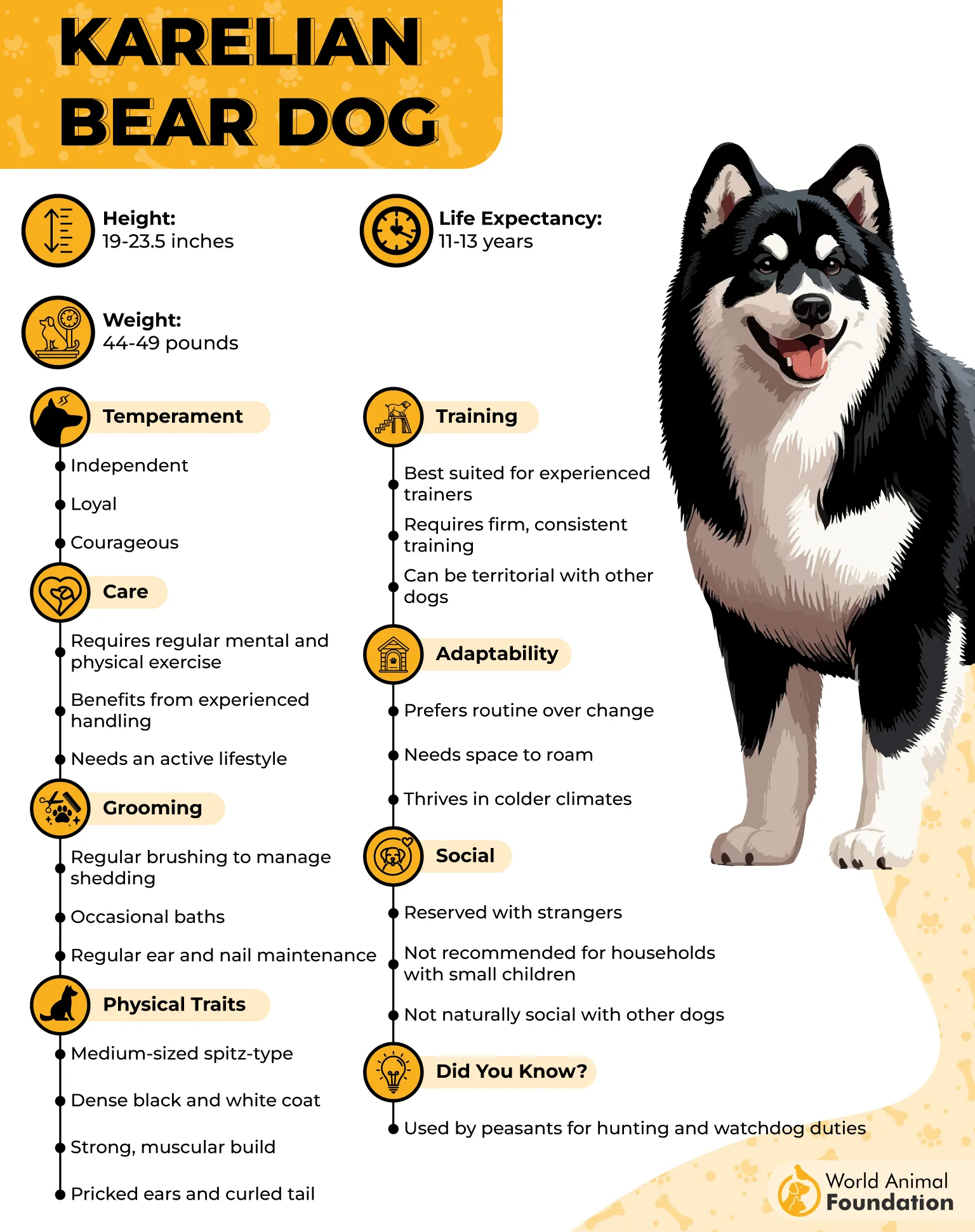
These dogs that have a PSI bite force of 245 can be taken to the den sites where the coyote pups are located and set to free range to engage and lure the coyote out of the den for bringing it in the rifle sight hunting party to kill.
The denning and pup-rearing season starts in February or March and ends in May; hence, spring is the prime time for high activity in coyotes. The coyotes build several denning areas to raise their litter of pups in a safe and secure place. At such a time, coyote vocalizations can also be used to bring out the parents to take them down.
5. Norwegian Elkhound
This burly fella with a bite force of 200-400 PSI is the national dog of Norway. This northern spitz type of dog breed is an impeccable hunter, guardian, defender, and herding dog. This medium-sized dog is a courageous pup known for tracking and hunting large game like elk, and can easily take down coyotes as well.
Purina states this brave pup independently tracks and holds the elk at bay, and barks loudly to signal the hunter towards the quarry. This efficient and smart Norwegian elkhound can also drive the quarry or large game towards the hunting party, who are ready and waiting to take the shot.
This dog has uniquely descended from a female wolf and male dog hybridization that occurred in northern Scandinavia after the domestication of dogs around 480-3000 years ago. This 44-51 pound dog is as big as a coyote and won’t be approached by coyote dogs or seen as prey.
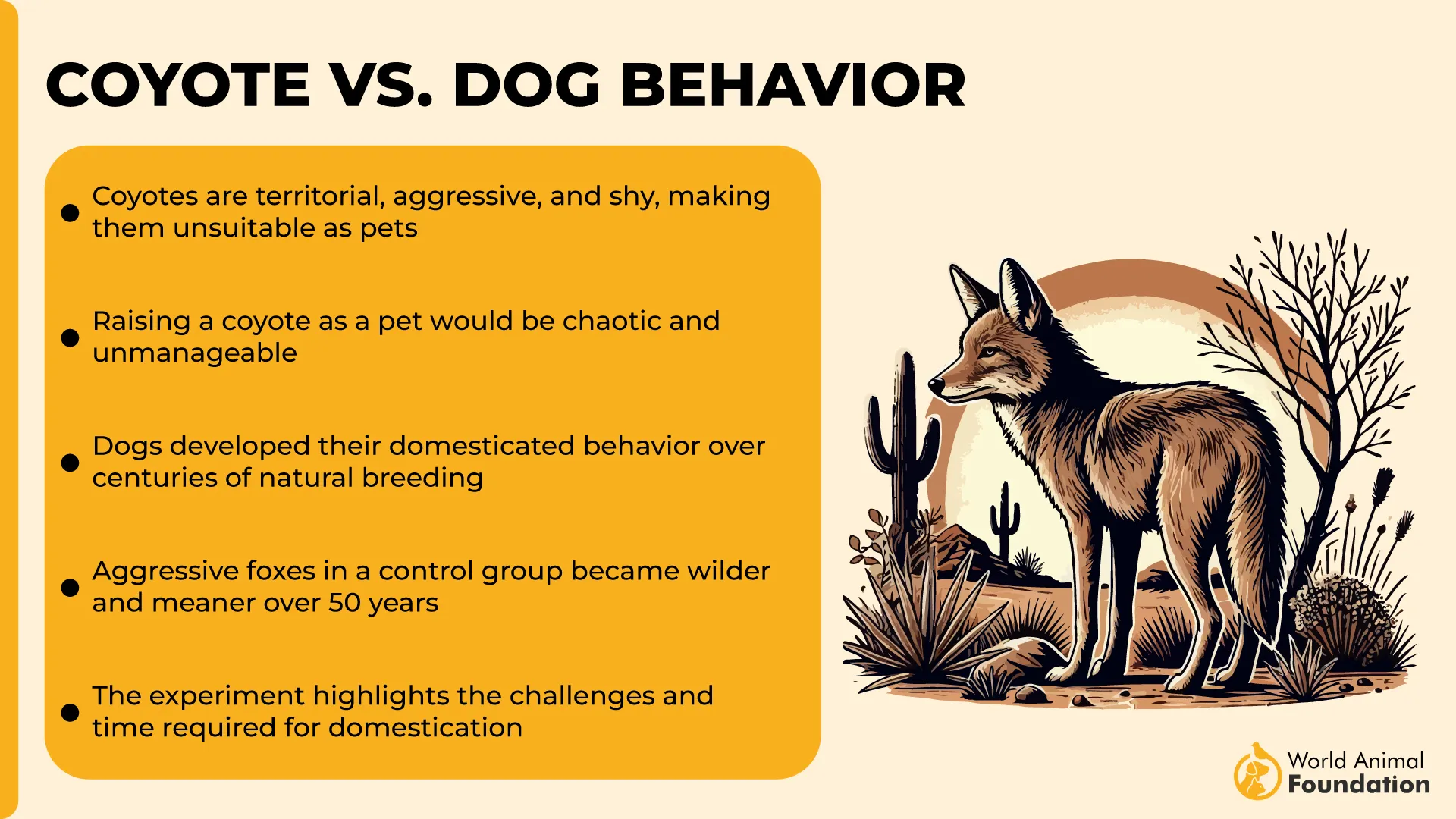
However, in desperate scenarios, it is better to keep your dogs protected with a spiked collar or a wolf collar to keep your sturdy and strong dogs safe.
Moreover, if you have ever heard of Mark Kayser, an explorer and hunter who gives tips on taking down coyotes. According to him, it is essential to make sure you train your hunting dog for animal protection and coyote hunting by mastering coyote vocalizations that you can use either at dusk or dawn to bring these sneaky canines into sight.
You can also use a moving decoy dog to give a coyote a false sign of a familiar canine near your hunting grounds to lure them for a challenge or to pique their curiosity.
6. Plott Hound
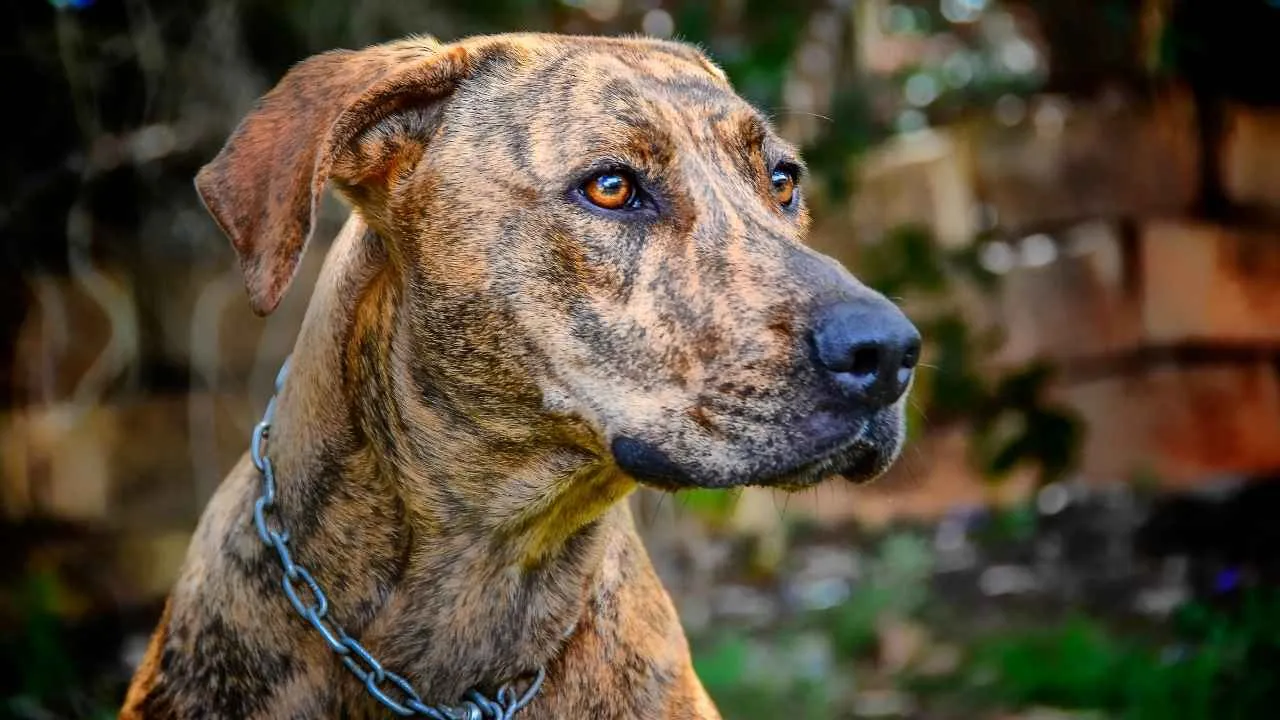
Plott Hounds are known for their intelligence, loyalty, and strength. Originally bred to be strong and persistent hunting dogs and companions, these confident, alert, and courageous pups are a force to be reckoned with. Plott hounds have a PSI bite force of 200, a scissors bite, and proficiency in hunting skills, which makes them capable of tracking and trailing game easily.
Continental Kennel Club states they are known for their exceptional sense of smell, are strong workaholics equipped with determination and stamina that helps them in chasing a scent for long distances and tracking and treeing animals like coyotes, raccoons, foxes, and even bears.
Plott hounds originated in Germany and have descended in part from Hanoverian Schweisshunds and medieval bloodhounds. These dogs are not only good hunting partners but also make exceptional family pets that get along well with children and even other dogs if properly socialized and trained from a young age. They have a strong prey drive, hence do not bode well with small pets like rabbits, guinea pigs, and cats.
These gentle and affectionate pups are quite hardy and have superior hunting instincts. They are immaculate in searching for wolves, coyotes, and wildcats. Initially used for hunting wild boars and bears. This pup can also be used for big game hunting.
7. Treeing Walker Coonhound
Nicknamed “the people’s choice,” this adorable pup with pleading eyes, a sweet face, and majestic tri-colored coat will raise your heartbeat and stir your soul without warning when you see this pup in action. With its long strides and swift action, the treeing walker coonhound seems even more daring and dashing as a hunting partner
PetMD says Treeing Walker Coonhounds were originally bred to take down raccoons, but are also used in hunting other game like bears, bobcats, deer, and cougars. These treeing walker coonhounds can prove to be quite a clever and sleek hunter.
Coonhounds have descended from the English and American foxhounds. Their family tree also involves a stolen dog of unknown origin named “Tennessee Lead,” who has also influenced the walker hound a lot. This medium sized coon dog originated in the United States.
The coon hounds are loving, intelligent and confident. These pups thrive on human interaction and are quite sociable. They make great companion dogs for active families and owners who understand the treeing walker coonhound’s agile and high-energy inbred nature as a hunting dog. These pups can be seen tireless, alert, and intense on the job, but at home, they are mellow and sensitive pooches who love comfort and bonding with their owners.
The treeing walker coonhound can easily be detected by its distinctive bay and vocalization, which alerts the owners from great distances. They have a strong and clear ringing voice, and like most hounds, these pups are even-tempered; they don’t get frustrated or aggressive towards people and other dogs.
When trained and socialized from a young age, these pups will happily co-exist with small animals and pets like cats, but owners should beware of their inherent nature as a small-game hunter.
As hunting dogs, this pup has incredible speed, stamina, and endurance. They need lots of exercise and physical and mental stimulation to keep them happy. These dogs have a PSI bite force of 200-400 and are good running hounds. It is essential to train your walking coonhound not to be gun-shy so they don’t get frazzled on the hunting course.
Conclusion
On an ending note coyote population is constantly increasing rather than decreasing in numbers, even after years of indiscriminate killing, hunting, and hounding of these wild species. There are still around 2.89 million to 4.70 million coyotes present in the United States. Hawaii is the only US state with no coyotes.
Many wildlife experts and recreation facilities propose that intensive coyote hunting and trapping can be totally counter-productive, and traditional lethal population control methods can escalate rather than resolve human wildlife conflicts. Hence, authorities should also consider the ecological balance and co-existing strategies rather than adhering to brutal population control methods. Make sure to avoid denning areas if you are out on a walk with a small child or dog that is less than 50 pounds in weight because they can be targeted or harmed by coyotes.
If you are worried about your livestock, which includes goats, sheep, mules, horses, chickens, and small pets. Then it’s better to get guard dogs that are either daunting or large guardians that can act as a deterrent for wild animals and predators like wolves and other vicious canines.
Ideally, the hunting dogs that can take down coyotes and have a one-on-one fight are cur dogs such as mountain curs and black mouth curs, or herding dogs like the great pyrenees, border collies, komondor, dogo argentino, kangal shepherds, and german shepherds. Moreover, running hounds like English greyhound and Fox hounds or the Akbash, Sarplaninac, Rhodesian Ridgeback, Tosa inu, Siberian huskies, Irish wolfhound, and American staghound can be quite lethal for coyotes.

